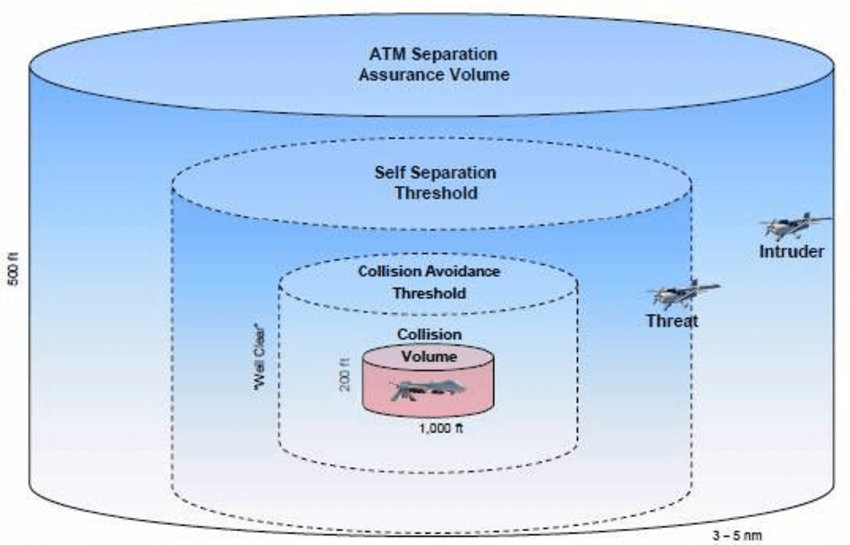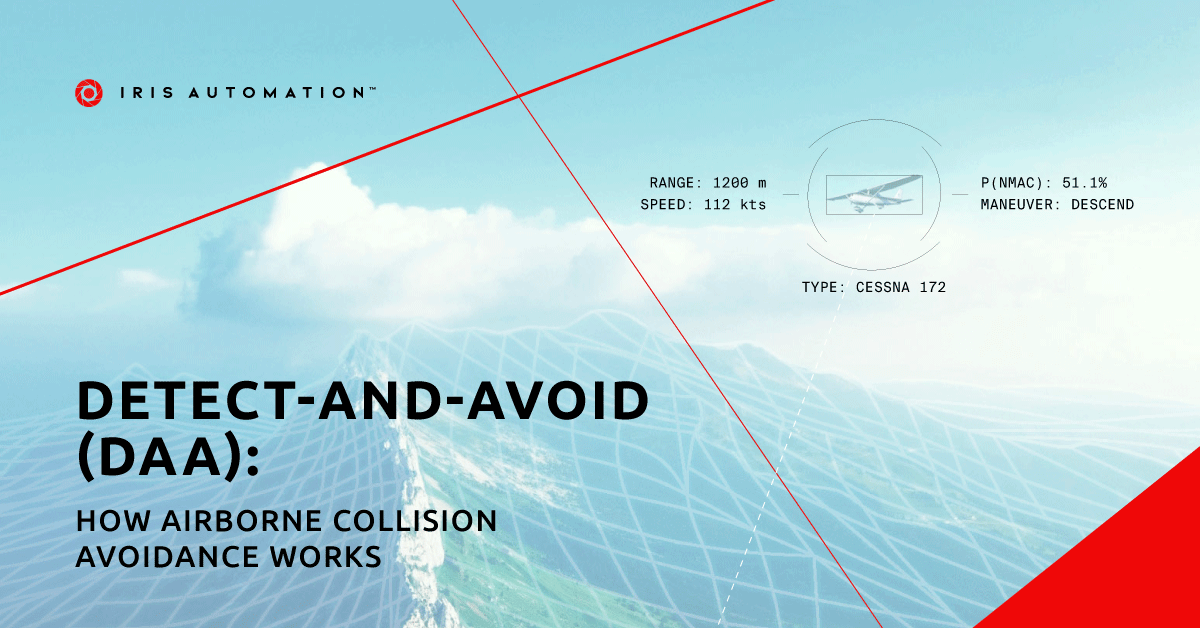by Alejandro Galindo
Why Detect-and-Avoid?
In the past few years, Civil Aviation Authorities (CAA) worldwide have been actively creating regulatory frameworks that will enable autonomous Unmanned Aerial Vehicles (UAV) to fly safely Beyond Visual Line of Sight (BVLOS), unlocking countless industries for scalable industrial drone operations. In programs such as the FAA’s Integrated Pilot Programs in the United States and Transport Canada’s BVLOS Technology Demonstration Program, extensive testing has been conducted to define what risk mitigation efforts will be required when flying BVLOS.
Cooperative manned aircraft use Automatic dependent surveillance–broadcast (ADS-B) to broadcast their position and other aircraft, including drones are able to pick up that broadcast and maneuver around them as needed. However, the majority of manned aircraft is noncooperative, meaning they don’t broadcast their position. This is especially true for the types of aircraft and missions that are commonly flown at low altitudes. In order to fly safely in national airspace alongside noncooperative aircraft and other non-broadcasting dynamic and static obstacles, an unmanned drone needs another form of risk mitigation, which is where Detect-and-Avoid (DAA) comes in.
Detect-and-Avoid is emerging as the primary means of risk mitigation for autonomous Unmanned Aircraft Systems (UAS). There are a number of potential DAA solutions. You can learn more about the various sensing modalities in our article “Drone Sensors: The Different Types You Should Know About.” In this article we focus on the electro-optical solution Iris Automation has created.
Safety Volumes
Safety volumes are hockey puck-like shapes around an aircraft used by CAAs to determine risk for potential collisions. “Well clear” is the larger volume, with a 2000 foot (610 meters) horizontal radius and 250 feet (76 meters) above and below, while the “Near Mid Air Collision” (NMAC) shape is smaller, with a 500 foot (152 meters) horizontal radius and 100 feet (30.5 meters) above and below. These volumes were determined by the Standards And Recommended Practices (SARP) and adopted by ASTM International and other standard bodies and regulators and based on work completed by MIT Lincoln Laboratory and other stakeholders.

The Iris Automation DAA Solution
The case for electro-optical
At Iris Automation, we believe that an electro-optical, aka camera, based DAA solution is the best form of risk mitigation for autonomous UAS. Electro-optical sensing affords a level of situational awareness that other sensors are unable to provide. It also captures very rich data; using computer vision techniques, the system can then classify what kind of object it is seeing, such as a commercial aircraft, small aircraft, or bird and estimate its location and velocity. Based on this information, our system will understand if the manned aircraft(s) present a challenge or threat to breach safety volumes.
Our system aims to keep intruders and manned aircraft outside of these volumes. Estimating the positions and velocities of one or more intruders, the system determines whether its own well clear volume may be breached, and if so, leads the UAS to perform an evasive maneuver. In order to provide this functionality, our system can detect small aircraft such as Cesnas and helicopters—the most common type of aircraft flying below 400 feet (122 meters)—at around 4000 feet (1.2 km) away.
An airborne solution
There are a number of benefits of having DAA technology directly on board the UAS. Onboard solutions are safer, since the capability goes with the drone instead of staying on the ground. It provides immediate reaction without lag, and a faster reaction means safer systems. They are more scalable since they don’t need to be set up for each location or extra mile. And pilot error is reduced, because even the most highly skilled remote pilots could struggle to avoid manned intruders from a large distance.
Continually improving technology
The system tracks and monitors thousands of objects while flying and has learned which objects to allocate resources to, such as an aircraft flying towards the UAS and which to ignore, such as a truck on the ground. The system continually builds confidence about the measurements and estimations it’s making, until a point that it determines that an aircraft or other dynamic obstacle may breach its well clear safety volume and performs an avoidance maneuver.
Our system has been training on this data for over four years of extensive testing, including tens of thousands of real encounters with manned aircraft and hundreds of thousands of simulated encounters in a variety of environments. As a software solution, its capabilities continue to fine tune and updates are sent to all of our systems remotely.
Find out more about the Iris Automation Detect-and-Avoid solution, Casia, at www.irisonboard.com/casia.
Sources:
https://www.researchgate.net/publication/327522735_Are_You_Clear_About_Well_Clear
https://arc.aiaa.org/doi/pdf/10.2514/1.D0091
Boskovic, Jovan & Mehra, Raman. (2013). Sensor and Tracker Requirements Development for Sense and Avoid Systems for Unmanned Aerial Vehicles. 10.2514/6.2013-4971.

